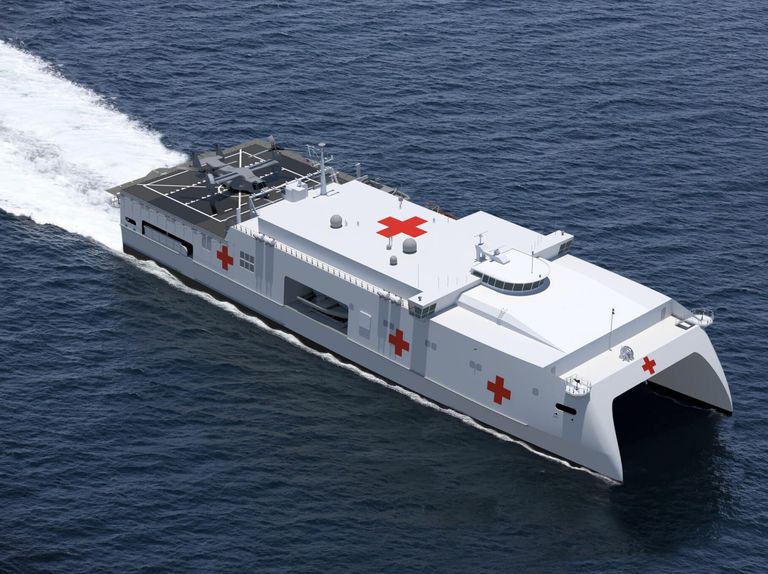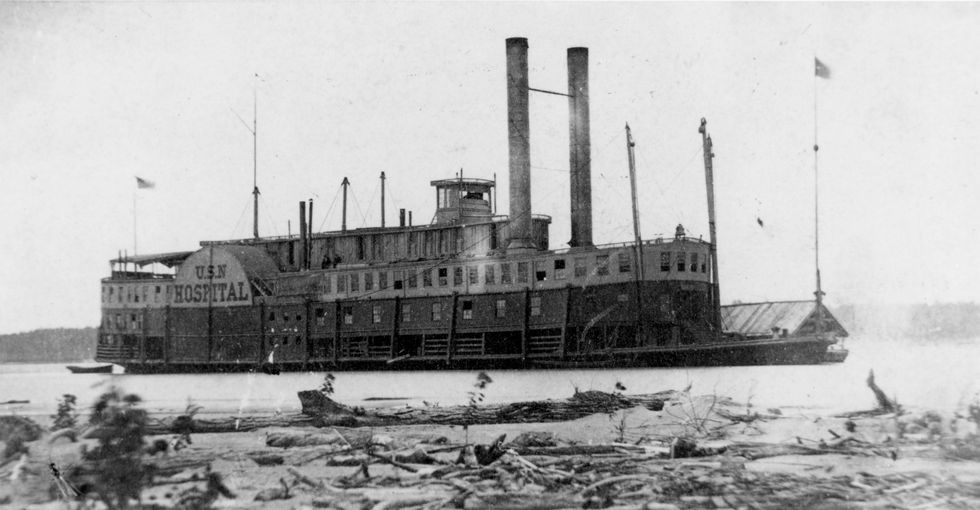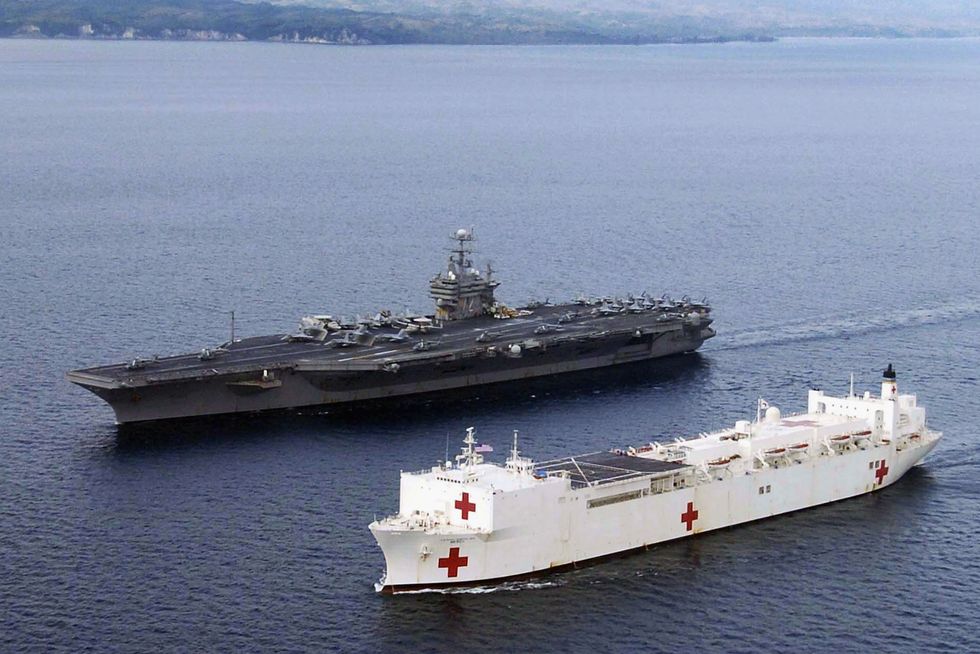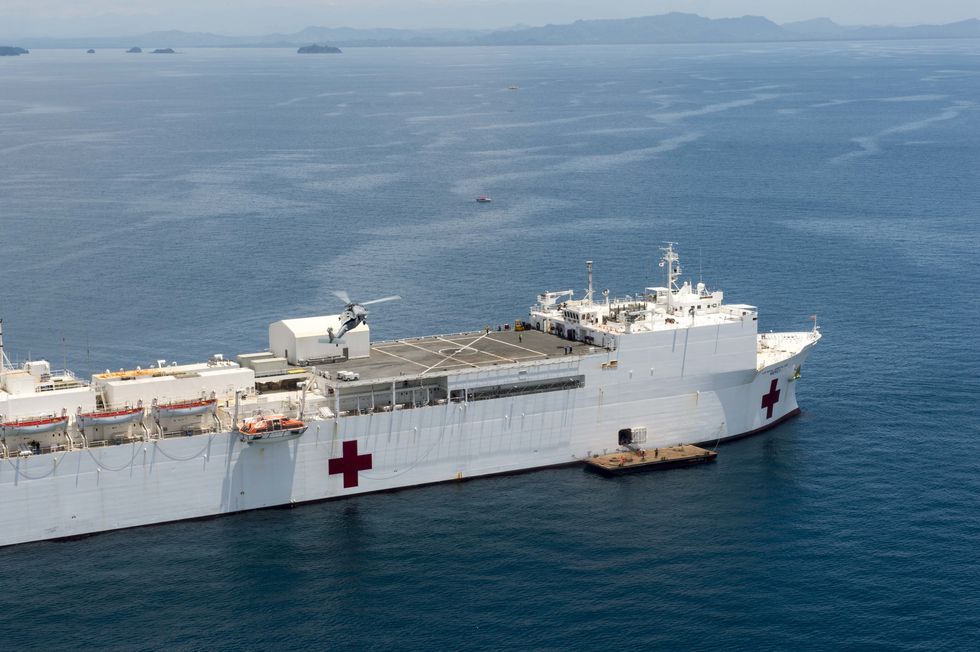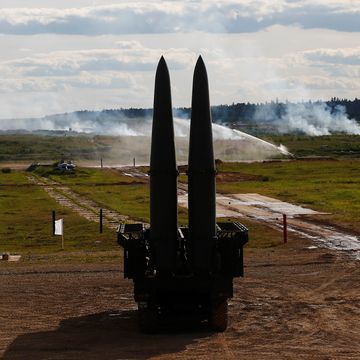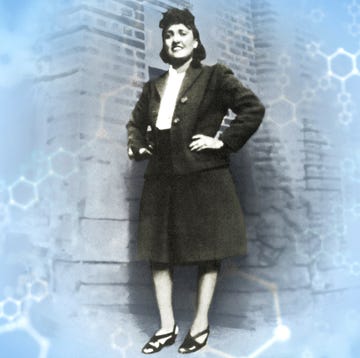The U.S. Navy’s massive hospital ships will soon be replaced by smaller, more accessible ships that can move closer to shore when necessary, all while caring for wounded troops.
The Navy has awarded a contract to the shipmaker Austal USA to build its next-generation hospital ships. The new Bethesda-class expeditionary medical ships will replace older ships that were built on supertanker hulls. The Bethesda-class ships are designed to more efficiently support U.S. forces abroad, with a new helipad that can accommodate the largest helicopters and tiltrotor aircraft.
Floating Hospitals
Armies have used hospital ships to treat the sick and injured for centuries. Hospital ships can keep up with advancing military campaigns, especially along coastlines, moving just behind the front line to keep the distance the wounded have to travel to a minimum. Unlike shore-based field medical stations, hospital ships embark larger, heavier, more sophisticated equipment such as X-ray machines, CT scanners, communications equipment for telemedicine, and more.
Hospital ships are protected by the laws of war. The 1949 Geneva Convention for the Amelioration of the Condition of the Wounded, Sick, and Shipwrecked Members of the Armed Forces stipulates that hospital ships are considered noncombatants and are given protected status—so long as they stay out of combat and do not otherwise advance the war effort.
There are other rules, too. Hospital ships must be painted white, to set them apart from gray-hulled warships that might be nearby. They must have dark red crosses, “as large as possible,” painted on their hulls to indicate their status. They must also fly their national flag, along with a white flag with a red cross.
A New Generation
The Navy signed a contract for three new Bethesda-class expeditionary medical ships. The first and namesake of the class, USNS Bethesda (EMS-1), is named after the Bethesda Naval Hospital in Bethesda, Maryland, now known as Walter Reed National Military Medical Center. The second, Balboa (EMS-2), is named after the Naval Medical Center San Diego, unofficially known as Balboa Naval Hospital in San Diego, California. The third ship is yet to be named.
The three ships are based on the Expeditionary Fast Transport (T-EPF), an aluminum-hulled catamaran ship built by shipbuilder Austal USA. The U.S. Navy is buying 16 T-EPFs, and after the last two are delivered Austal USA will switch over to building the medical ships.
Bethesda and her sister ships, according to Naval News, will be 361 feet long with a beam (width) of 103 feet. Each will have a draft of 15 feet, a speed of 18 knots or greater, and a range of 5,000 miles. A helicopter landing pad on the rear can accommodate the Marine Corps’s new CH-53K King Stallion heavy lift helicopter, the MV-22 Osprey, and the UH-60 Blackhawk series of Army helicopters. The ship will have a total crew, including embarked medical personnel, of 223.
In terms of medical facilities, the ships will each have 34 acute care stations, six isolation wards, 14 intensive care units, 14 intensive care isolation units, and three operating rooms.
Hospital ships are typically unarmed but are allowed to carry weapons for self-defense, and only for self defense of the ship. That means they can carry short-range weapons that protect the ship but not longer-range weapons, like SM-2 surface to air missiles, that could protect friendly combatants as well. The latest model of the EMS class, as seen in the top image, includes what appear to be four .50 caliber machine guns, two mounted on the bow and two on the stern.
How the Generations Stack Up
The two Mercy-class hospital ships, Mercy and Comfort, are huge ships converted from oil tankers. At 894 feet long, each is longer than two new EMS ships parked nose to tail. The Mercy-class ships have an incredible 1,000 bed capacity, including 80 intensive care units, far more than the Bethesda-class.
The Mercy class’s design has significant drawbacks, however. The ships are huge, making them large targets and easier to spot on the battlefield. That’s irrelevant if the enemy intends to comply with the Geneva Conventions, but it becomes a problem if the enemy is indiscriminately attacking ships.
Patient access is another issue. The helicopter landing pad is relatively small and located amidships, where it’s tricky to land. Patients can also be embarked via a gangway if the ship is tied to port, or via small boats, but neither are ideal for the critically injured. With a draft of 32 feet, the Mercy class can’t pull in close to coastal cities and towns, except at piers and berths.
The Bethesda class is an across-the-board improvement, particularly in terms of access. Instead of one large hospital ship, the Navy would likely use two smaller Bethesdas. The helicopter landing pad is on the ship’s stern, where it is easier to approach and land. The ships have a draft of just 15 feet, allowing them to pull up to shore and use more austere shore facilities, such as fishing piers. Once portside, a swing-out ramp on the starboard side allows for easier loading and unloading of patients.
Smaller ships provide smaller targets, they can more easily hide, especially in coastal urban areas, and allow the Navy to distribute medical care among multiple platforms.
The Takeaway
The Navy’s next-gen hospital ships are smaller than the ones they replace, but that’s likely a good thing. Neither of the Mercy-class ships were ever used to capacity anyway. The real issue with a hospital ship isn’t whether or not it has 1,000 beds, but whether or not it can keep up with and survive the rigors of fast-paced modern warfare.

Kyle Mizokami is a writer on defense and security issues and has been at Popular Mechanics since 2015. If it involves explosions or projectiles, he's generally in favor of it. Kyle’s articles have appeared at The Daily Beast, U.S. Naval Institute News, The Diplomat, Foreign Policy, Combat Aircraft Monthly, VICE News, and others. He lives in San Francisco.
